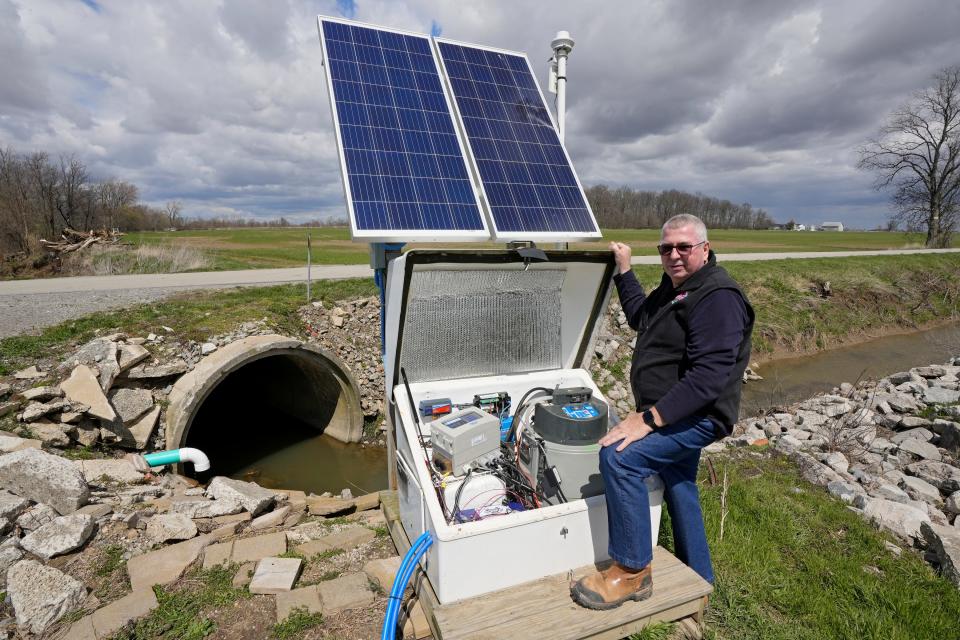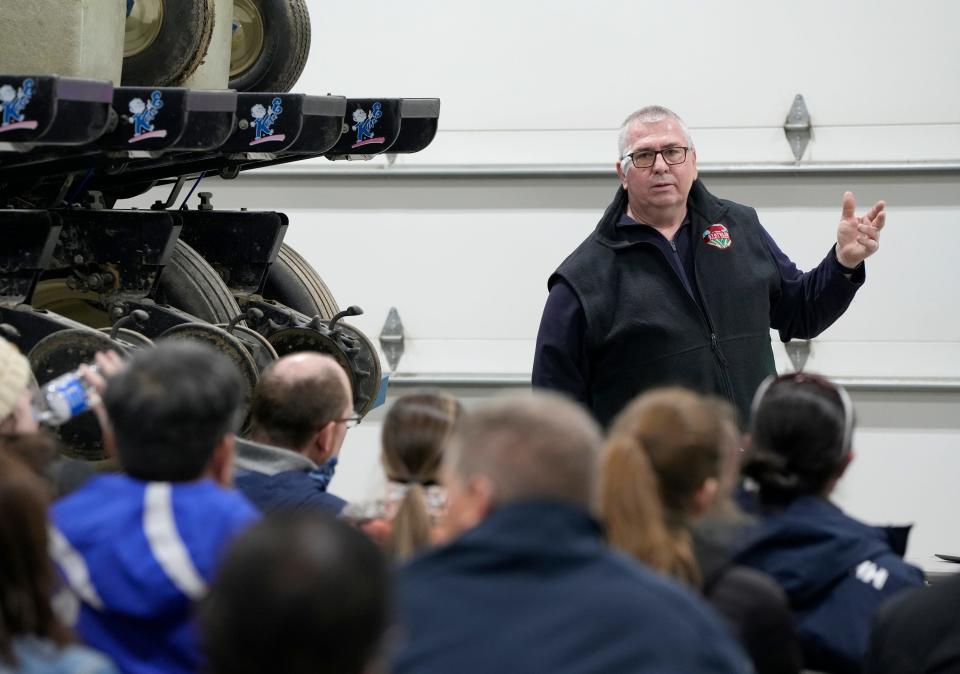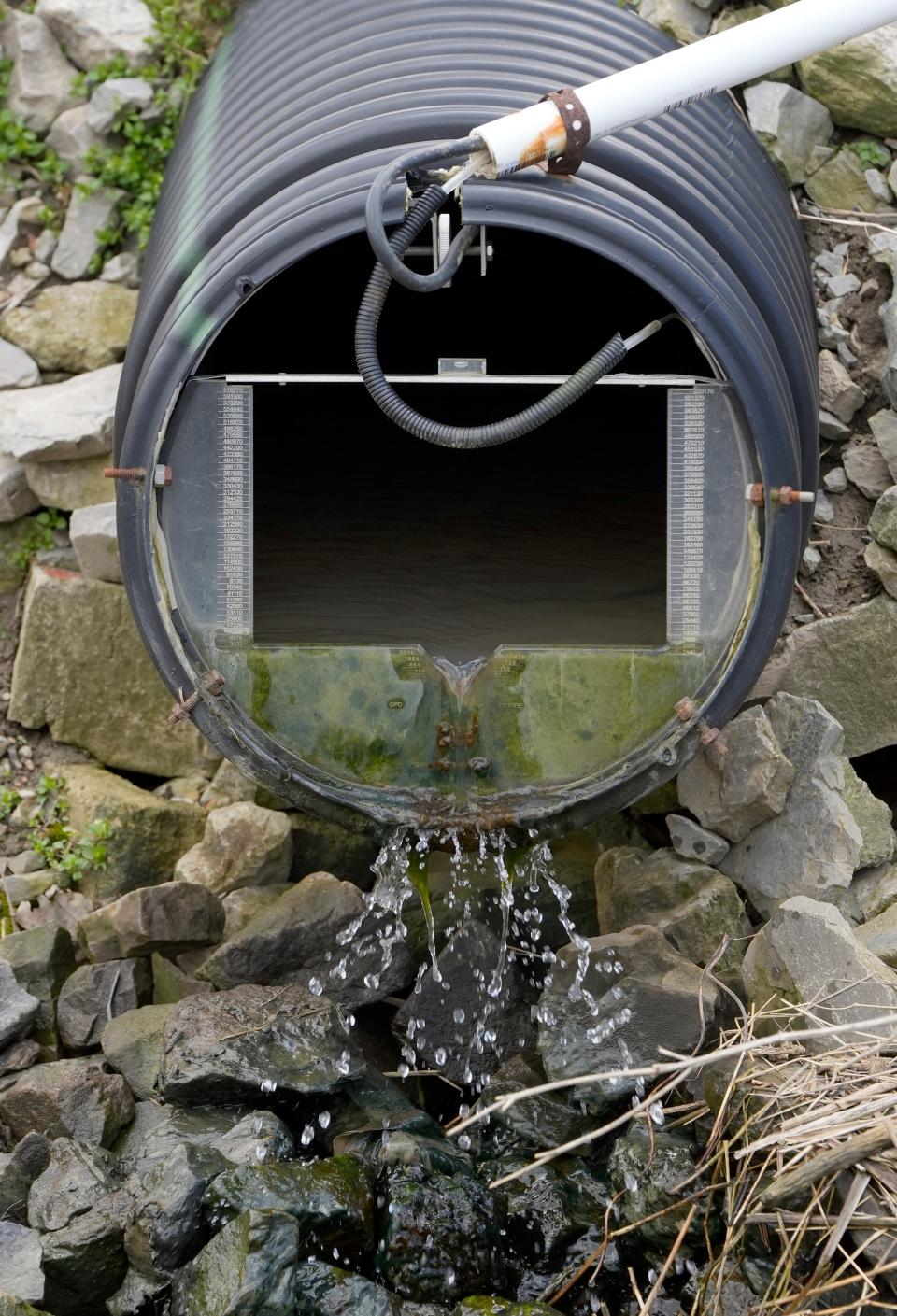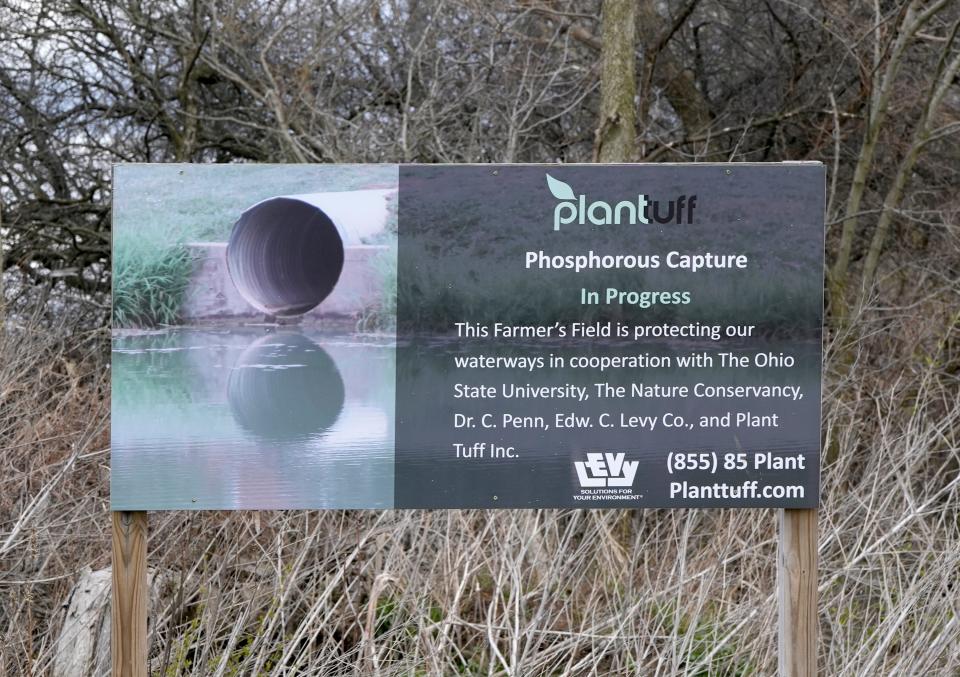Ohio farmers work to keep algae-causing nutrients out of water

Duane Stateler's Hancock County farm is a showcase for conservation practices, many of them designed to keep nitrogen and phosphorus out of drinking water.
Stateler's property has — among other things — a monitoring system in nearby waterways, phosphorus removal beds, a drainage management structure, and cover crops to keep the soil in place after the primary crops are harvested.
“Our soil health has come a lot further than we thought it would," Stateler told several dozen agricultural specialists and academics he hosted on a recent tour of his farm.
More: Farmers make progress in keeping fertilizers out of Ohio waterways, but much work remains
Stateler wants his peers to know which techniques are worthwhile and how to best adopt them.
"Farmers are pretty timid," he said. "They like watching someone else do it first."

The stakes are high. Nitrogen and phosphorus starve rivers and lakes of oxygen and cause harmful algae blooms that contaminate drinking water and kill aquatic life. Algae blooms forced Toledo residents to use bottled water for several days in 2014 when blooms made water from Lake Erie unsafe to drink.
Algae blooms have also filled many of Ohio's inland lakes and have stretched hundreds of miles along the Ohio River.
Ohio has spent tens of millions of dollars to keep the nutrients out of waterways, most prominently through H2Ohio, a $172 million Ohio Department of Agriculture program that compensates farmers for equipment purchases and restores nutrient-absorbing wetlands.
More: DeWine signs contentious bill removing state regulation of ephemeral streams
Measuring water quality and identifying the source of harmful nutrients is a complex process requiring meticulous calculations. Intangibles like heavy rainfall or drought can affect the data, which means assessing the farming community’s progress isn’t as simple as testing rivers and streams.
While nearly everyone agrees that a sizable number of farmers have changed their ways, meaningful data on their efforts is months, if not years, away, scientists and environmentalists say.
In the meantime, experimentation helps farmers identify which strategies work best.
Stateler’s farm near McComb is one of three in the Blanchard River Demonstration Farms Network, a partnership between the U.S. Department of Agriculture, the Natural Resources Conservation Service and the Ohio Farm Bureau Federation.
Stateler said the work there showed that some best practices are effective, while other techniques disappointed.

Cover crops, for example, work extraordinarily well at trapping nitrogen and keeping soil healthy, but are unable to prevent phosphorus from escaping, Stateler said.
“In order to capture all of it we need to apply it when the crop is growing,” Stateler said. “So we’re trying to come up with more ways we can do that.”
Quantifying progress
Measuring nitrogen and phosphorus in watersheds is an arduous process, said Laura Johnson, director of the National Center for Water Quality Research at Heidelberg University in Tiffin.
Nutrients can stay in the soil for years and it is impossible to distinguish between fertilizer applied this year and fertilizer applied last year.
“I wouldn't expect to see much change yet,” Johnson said. “It takes time for something like dissolved phosphorus to respond to changes in fertilizer application.”
In addition, heavy rain can flood fields and worsen nutrient runoff, she added, washing away any progress.
When asked if the state’s waterways have improved since the Toledo water crisis, Christopher Winslow, director of Ohio State University’s Sea Grant and Stone Laboratory, said “That’s a tricky question.”
“I would say the issue is getting better in that we know more of the sources of the nutrients, and we know more approaches to reduce nutrient runoff,” he said. “And we’re getting better because we now know more about how to clean up that water so that humans aren't getting exposed.”
Researchers and farmers, for the most part, know what they need to do, he said.
“The positive is we know what tools to use, but those tools are expensive,” Winslow said. “We need about a 75-plus percent adoption rate” for some best practices such as planting cover crops.
In the 24-county northwest Ohio region that includes the Lake Erie watershed, roughly 1.6 million acres of farmland are participating in H2Ohio, representing a little less than 40% of the region’s farmland.

“I shouldn't say it's not common,” said Putnam County farmer Jeff Duling, who is also the Second Vice President of the Ohio Federation of Soil and Water Conservation Districts. “People use them, but wish it was better. If we can keep our ground covered it would stop a lot of the problems from these big rains we're getting.”
Best management practices
The list of best practices includes planting cover crops to keep the soil in place, using buffers such as trees to shield rivers and streams from nutrient runoff, planting in untilled fields, installing drainage tiles, and measuring nutrient levels in the soil to prevent overuse.
Such practices try to thread the needle between competing concerns, said Aaron Heilers, project manager for the Blanchard River Demonstration Farms Network.
“We can't sacrifice the farmers' economic profitability in the name of better environmental outcomes, but we don't want to just be all about profit and not care about the environment,” he said.
In other words, farmers can’t stop using the nutrients that cause algae blooms, but they can find ways to keep those nutrients in the soil and out of the water.
The barriers to participation
Practices such as storm drainage and buffers between fields and streams are helpful. And applying fertilizer in a more efficient way saves farmers money in the long run.
But the upfront cost is daunting. Farmers need to spend tens of thousands of dollars on farm machinery and water monitors.
"Equipment is our biggest cost," Stateler said.
And agriculture is an inherently unpredictable business, making farmers unwilling to spend money on untested practices.
While small businesses can raise prices to offset increased expenses, the price of commodities like beef, corn, and soybeans are set by the market and boards like the Chicago Mercantile Exchange. Prices are notoriously volatile, so farmers can’t always count on a lucrative harvest to offset big expenses.
Weather conditions, which aren’t always conducive to best management practices, represent another barrier to change.
“There were lots of cover crops planted the first part of last October,” said Terry Mescher, Ohio Department of Agriculture H2Ohio Program Director. “The weather turned against it.”
Cold and wet conditions kept the crops from growing, he said.
“Some years we get a great result, other years not so much,” Mescher said.
Farmers are also unsure if H2Ohio will completely cover the cost of upgrades and equipment.
“We’re turning in bills right now and we’ll see if it covers the cost,” Duling said. “I think it will, but it’s not about making the money on it, it’s about the environment.”
pcooley@dispatch.com
@PatrickACooley
This article originally appeared on The Columbus Dispatch: What Ohio farmers are doing to reduce algae blooms
